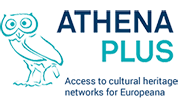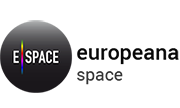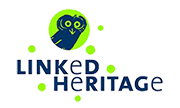3D-ICONS
3D Digitisation of Icons of European Architectural and Archaeological Heritage
2012-2015 (36 months)
3D-ICONS' aim was to digitise a series of architectural and archaeological masterpieces of world and European cultural significance and provide 3D models and related digital content to Europeana, with the aim of contributing to the critical mass of highly engaging content available to users. Public fascination with the architectural and archaeological heritage is well known, it is proven to be one of the main reasons for tourism according to the UN World Tourism Organisation. Historic buildings and archaeological monuments form a significant component Europe’s cultural heritage, they are the physical testimonies of European history and of the different events that led to the creation of the European landscape, as we know it today. The project exploited existing tools and methods, to integrate them in a complete supply chain of 3D digitization to contribute a significant mass of 3D content to Europeana. The project focused on UNESCO World Heritage monuments and other monuments of outstanding value at European level, to illustrate a particular strand of Europe's history. The digital content included overall 3D models and reconstructions, enlarged models of important details, images, texts, videos. It also included and re-contextualized in 3D, objects belonging to a monument but presently located elsewhere, for example in a museum. The project's activities included both new digitization as well as the conversion of some existing 3D data into formats which are accessible for Europeana users. The project's anticipated impact was to make accessible through Europeana an unprecedented quantity of high-quality, 3D, well-organized and attractive information about the masterpieces of European architecture and archaeology.

AthenaPlus
Access to cultural heritage networks for Europeana
2013-2015 (30 months)
AthenaPlus built on the successful experience developed by the previous ATHENA project – where LIDO and the ATHENA Ingestion Server and Mapping Tool (MINT), widely used across the Europeana's ecosystem of projects including the ongoing Linked Heritage project were developed, in order to further advance and complete the effective infrastructure and tools developed to support museums and other cultural institutions in their work to making available digital content through Europeana. The principal objectives of the AthenaPlus project were to: - Contribute more than 3.8 millions metadata records to Europeana - Improve search, retrieval and re-use of Europeana’s content - Experiment with enriched metadata their re-use adapted for users with different needs. The AthenaPlus content came from more than 540 cultural institutions (more than 80% museums).

Europeana Fashion
2012-2015 (36 months)
Europeana Fashion has been a best practice network composed by 23 partners from 12 European countries, which represent the leading European institutions and collections in the fashion domain. The consortium has aggregated and provided to Europeana the most outstanding and rich materials about the history of European fashion, include more than 700.000 fashion-related digital objects, ranging from historical dresses to accessories, photographs, posters, drawings, sketches, videos, and fashion catalogues. The Europeana Fashion best practice network has aimed at: 1) Aggregating and harmonizing existing digital content coming from the most important and interesting public and private European fashion collections, ingesting this fashion-related content into Europeana. 2) Improving interoperability between scattered and heterogeneous collections, promoting the use of the Europeana Data Model and developing tools, such as a specialized Fashion Thesaurus, to best handle the multilingual nature of the aggregated content. 3) Providing access to this digital content also through the creation of a dedicated fashion portal that will serve as a specialized access point to heterogeneous fashion collections across Europe. 4) Developing tools and services for the integration of user generated content that will enrich and complement the standard metadata descriptions and will support the contextualization of the aggregated content through the connection with open content sources like Wikipedia. 5) Actively engaging the European fashion community in museums, universities and in the private sector, raising awareness on best practices on digitization, IPR issues and semantic interoperability developed inside the BPN and in the Europeana family of projects.

EuropeanaPhotography
EUROPEAN Ancient PHOTOgraphic vintaGe repositoRies of digitAized Pictures of Historical qualitY
2012-2015 (36 months)
EuropeanaPhotography has been a great and quite unique consortium and project that has put together some of the most prestigious photographic archives, public libraries and photographic museums covering specifically the length of time from the beginning of photography (1839 with the first example of images from Fox Talbot and Daguerre) to the beginning of the Second World War (1939). EuropeanaPhotography has therefore covered a precise historical period in order to bring into Europeana some of the most important, precious and beautiful images from a very important period that crated so much changes in Europe in several sectors as a proof of diversity and richness at the same time: from the industrial revolution to the social conquests, from the improvements of the photographic processes (salt print, albumen prints, collodion glass plates to the modern gelatin silver photos to the history of important, unknown and famous photographic ateliers of photography), to the changes of the lifestyle of our citizens, from the changes of our cityscapes to the changes of our landscapes, from the First World War to the Grand Europeans Expo Pavilions.

Europeana Space
Spaces of possibility for the creative re-use of Europeana’s content
CIP-ICT-PSP.2013.2.1b / 621037
2014-2017 (36 months)
The objective of Europeana Space has been to increase and enhance the creative industries' use of Europeana by delivering a range of resources to support their engagement. The use of Europeana by the creative industries is limited by factors including issues around the IPR status of content and the need for business models demonstrating the potential for exploitation of available content. In addressing these problems Europeana Space brought together high-level key expertise from the European creative industries, technology-based enterprises, the cultural heritage sector and higher education. Europeana Space built 3 Spaces, the Technical, Content and Innovation Spaces: physical and virtual environments to enable the creative re-use of cultural content. They contain online guidelines and tools, a technical framework; a platform for IPR management; hackathons and workshops to inspire and support content providers, technology partners, creators and industry bodies to develop new content-based services and applications; and incubation/mentoring by business experts to stimulate and support creative entrepreneurship. 6 Pilots and 3 Demonstrators present innovative models of content use in interactive TV, photography, dance, games, publishing and cultural heritage. A wide-ranging dissemination and sustainability programme has ensured Europe-wide penetration of the Best Practices developed and shared through the project. Europeana Space has addressed all sectors of the creative industries, from content providers to producers, exhibitors, artists and makers of cultural/creative content, publishers, broadcasters, telecoms and distributors of digital content. Its aimed to significantly increase use of Europeana and new opportunities for employment and economic growth within the creative industries through continuing development of innovative applications and services based on Europe’s rich digital cultural resources.

EUscreenXL
EUscreenXL, the pan-European audiovisual aggregator for Europeana
2013-2016 (36 months)
EUscreenXL was a three-year project that aggregated a comprehensive body of professional audiovisual content and made it accessible through Europeana and the EUscreenXL portal. The project consortium consisted of 22 leading audiovisual archives, excellent media scholars, skilled technical service providers and the EBU. The partnership has established alliances with key stakeholders as the Europeana Foundation, FIAT/IFTA. EUscreenXL represents a considerable segment of Europe’s creative industries and has a particular strong link to the public service broadcasting community.

Linked Heritage
Coordination of Standards and Technologies for the enrichment of Europeana
2011-2013 (30 months)
Linked Heritage had 3 main objectives: I) to contribute large quantities of new content to Europeana, from both the public and private sectors; II) to demonstrate enhancement of quality of content, in terms of metadata richness, re-use potential and uniqueness; III) to demonstrate enable improved search, retrieval and use of Europeana content. Linked Heritage has facilitated and delivered large-scale, long-term enhancement of Europeana and its services. The project addressed the problems associated with: - Non-standard descriptive terminologies - The lack of private sector and 20th Century content - The preservation of complex metadata models within the Europeana metadata schema. The consortium included representatives of all the key stakeholder groups from 20 EU countries, together with Israel and Russia. These include ministries and responsible government agencies, content providers and aggregators, leading research centres, publishers and SMEs. The Europeana Foundation has been involved as subcontractor. Several partners have participated in related Europeana ecosystem projects; this guaranteed alignment with Europeana’s evolution. In addition, organisations which had not in the past been involved have contributed for the first time to Europeana. 3 million new items have been delivered to Europeana, covering a wide spectrum of types of cultural content.
Social&Smart
Social housekeeping through intercommunicating appliances and shared recipes merged in a pervasive web-services infrastructure
IS-Helleana
Intelligent System for HELLEnic Audiovisual National Aggregator
ΕΣΠΑ 2007-2013 - Συνεργασία / 09ΣΥΝ-72-922
2011-2014 (36 μήνες)
Στόχος του έργου IS-Helleana ήταν η εφαρμογή σύγχρονων τεχνολογιών του Παγκοσμίου και του Σημασιολογικού Ιστού για την ανάπτυξη ολοκληρωμένου συστήματος με σκοπό την ενοποιημένη πρόσβαση, διαχείριση, αναζήτηση και διαδραστική παρουσίαση του Ελληνικού οπτικοακουστικού αποθέματος.

